At Georgia Top Green Buildings, we proudly present the finest examples of sustainable architecture and eco-friendly construction in the state. Our mission is to showcase the innovative and environmentally conscious buildings that are shaping Georgia’s future.
- Georgia is ranked 6th in the US Green Building Council’s ranking of states leading the way in green building.
- LEED-certified buildings in Georgia contribute to reduced energy usage and a lower environmental impact.
- The Georgia World Congress Center is a notable example of sustainable architecture in the state.
- LEED certification plays a crucial role in promoting eco-friendly construction practices and sustainable development in Georgia.
- California holds the top spot in the ranking of states with the highest number of LEED professionals.
The Importance of LEED Certification in Georgia
LEED-certified buildings play a pivotal role in Georgia’s commitment to green construction practices and sustainable development. As the sixth state leading the way in green building according to the US Green Building Council’s ranking, Georgia has demonstrated its dedication to creating environmentally friendly structures. With 66 certified projects in 2022, including notable buildings like the Georgia World Congress Center, the state has embraced the principles of LEED (Leadership in Energy and Environmental Design) to reduce energy usage and minimize the environmental impact of its buildings.
LEED certification provides a recognized standard for sustainable development, ensuring that buildings are designed, constructed, and operated in an eco-friendly manner. By adhering to the guidelines set forth by LEED, Georgia aims to create healthier indoor environments, conserve natural resources, and promote energy efficiency. These buildings incorporate various green construction practices, such as the use of renewable materials, efficient heating and cooling systems, and advanced water conservation techniques.
LEED-certified buildings not only benefit the environment but also offer advantages to building occupants. Improved indoor air quality, access to natural light, and enhanced thermal comfort contribute to the well-being and productivity of those working or living in these buildings. Additionally, LEED certification boosts the market value of properties, attracts environmentally conscious tenants, and positions Georgia as a leader in sustainable development.
By prioritizing LEED certification, Georgia is driving the adoption of sustainable construction practices and inspiring other states to follow suit. As buildings account for a significant portion of greenhouse gas emissions, the commitment to green building is crucial in mitigating the adverse effects of climate change. Through LEED certification, Georgia is paving the way for a more sustainable future, where buildings are designed to harmoniously coexist with the environment.
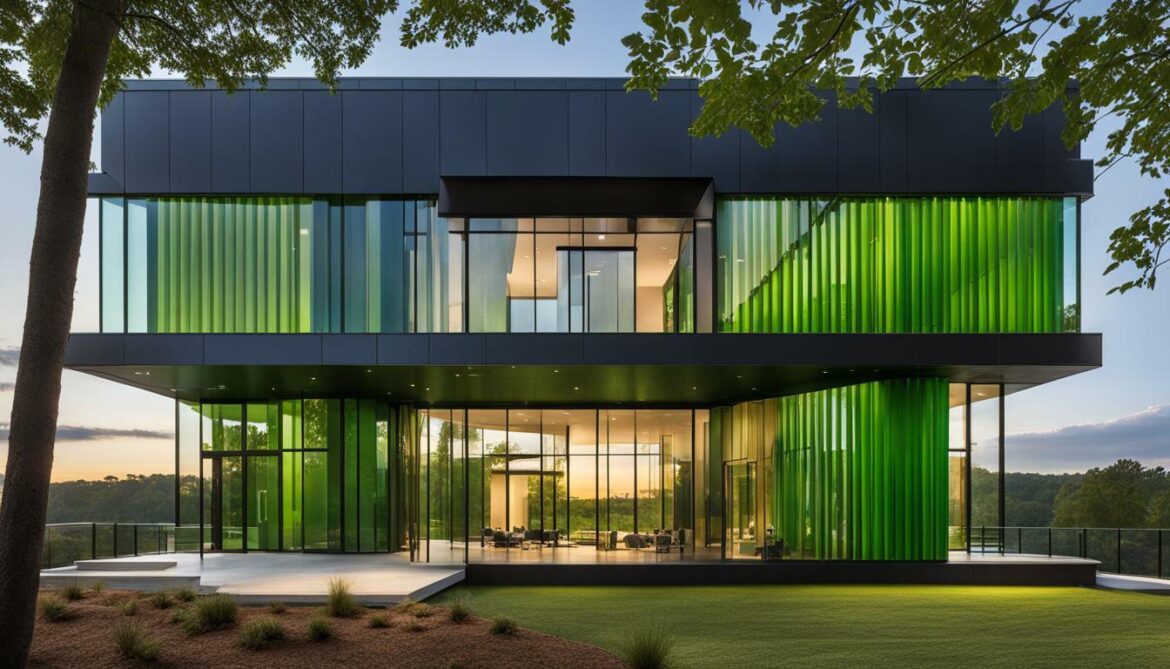
| Ranking |
State |
LEED-Certified Gross Square Footage per Capita |
| 1 |
Washington, D.C. |
107.4 |
| 2 |
Massachusetts |
5.61 |
| 3 |
Illinois |
3.23 |
| 4 |
Colorado |
2.92 |
| 5 |
Hawaii |
2.74 |
| 6 |
Georgia |
2.61 |
| 7 |
Oregon |
2.48 |
| 8 |
Minnesota |
2.47 |
| 9 |
California |
2.46 |
| 10 |
New York |
2.41 |
Georgia’s Leading Green Buildings
Let’s explore some of Georgia’s leading green buildings, which boast both sustainable design and LEED certification. Georgia is listed as the sixth state leading the way in green building according to the US Green Building Council’s ranking, based on LEED-certified gross square footage per capita over the past year. In 2022, the state had 66 certified projects, showcasing its commitment to environmentally friendly construction practices.
One notable green building in Georgia is the Georgia World Congress Center, which stands as a prime example of sustainable architecture. This state-of-the-art facility incorporates energy-efficient design and utilizes green building materials to minimize its environmental impact. The center’s commitment to sustainability has earned it LEED certification, further highlighting its dedication to eco-friendly practices.
To further promote energy-efficient design, Georgia has implemented the LEED certification system, recognizing buildings that meet strict standards for sustainable construction. These LEED-certified buildings in Georgia prioritize energy conservation, water efficiency, and the use of renewable materials. By integrating energy-efficient design principles, these buildings contribute to a greener future while reducing their overall environmental footprint.
In addition to the Georgia World Congress Center, there are several other LEED-certified buildings in Georgia that showcase energy-efficient design. From commercial structures to residential complexes, these green buildings prioritize sustainability and demonstrate the potential for eco-friendly construction practices. They serve as inspiring examples of how architecture can harmonize with the environment, creating spaces that are both aesthetically pleasing and environmentally responsible.
Overall, Georgia’s leading green buildings demonstrate the state’s commitment to sustainable development and environmentally friendly practices. Through their LEED certifications and energy-efficient designs, these buildings contribute to a greener future and set a positive example for the construction industry. With ongoing efforts to promote eco-friendly construction and sustainable development, Georgia continues to advance as a leader in green building practices.
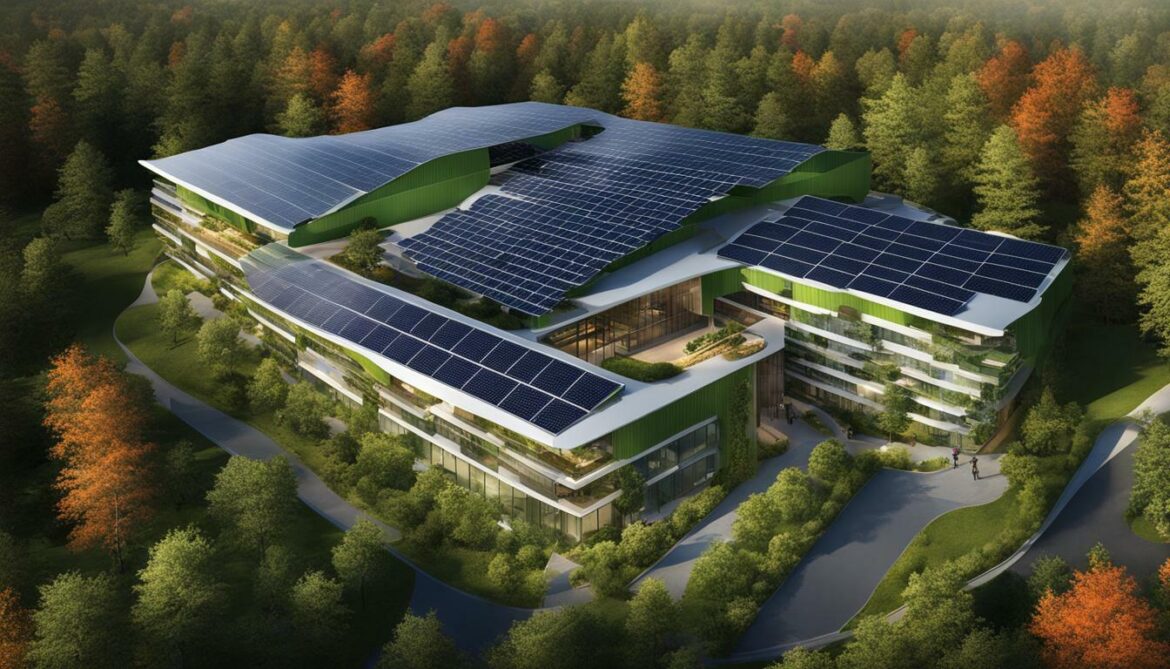
Discover the innovative sustainable architecture of the Georgia World Congress Center, where eco-friendly materials and design principles converge. This iconic venue, located in downtown Atlanta, showcases the state’s commitment to green building practices and environmental sustainability. With its LEED certification and emphasis on energy-efficient design, the Georgia World Congress Center sets a new standard for sustainable development in the region.
One of the standout features of the Georgia World Congress Center is its use of green building materials. These materials not only minimize the environmental impact of construction but also enhance the overall energy efficiency of the building. From recycled steel to low-emission paints, every aspect of the center’s design has been carefully considered to ensure maximum sustainability. The use of natural lighting and efficient insulation further reduces energy consumption, making the Georgia World Congress Center a leader in eco-friendly architecture.
As a testament to its commitment to sustainability, the Georgia World Congress Center has achieved LEED certification. LEED, or Leadership in Energy and Environmental Design, is a globally recognized rating system that evaluates the environmental performance of buildings. By meeting rigorous criteria in areas such as energy efficiency, water conservation, and indoor air quality, the center has proven its dedication to sustainable practices. This certification further solidifies the Georgia World Congress Center’s position as a flagship green building in the state.
With its striking design and focus on sustainability, the Georgia World Congress Center serves as an inspiration to architects, developers, and policymakers alike. It exemplifies the potential of sustainable design in creating functional and aesthetically pleasing spaces while minimizing the environmental impact. As Georgia continues to prioritize green building practices, the Georgia World Congress Center stands as a shining example of what can be achieved through sustainable architecture and green building materials.
Image related to the current section:

| Key Features of the Georgia World Congress Center |
LEED Certification |
Green Building Materials |
| ✓ Sustainable architecture |
✓ LEED-certified |
✓ Recycled steel |
| ✓ Energy-efficient design |
✓ Energy efficiency |
✓ Low-emission paints |
| ✓ Natural lighting |
✓ Water conservation |
✓ Efficient insulation |
Green Infrastructure in Georgia
Georgia’s commitment to environmental sustainability is exemplified by its investments in green infrastructure projects throughout the state. These initiatives aim to create a more sustainable future by integrating nature-based solutions into urban development and infrastructure planning.
One of the key components of green infrastructure in Georgia is the implementation of green roofs. These innovative systems provide multiple benefits, including improved stormwater management, reduced energy consumption, and enhanced air quality. By utilizing vegetation and specialized membranes, green roofs mitigate the heat island effect and contribute to the overall well-being of urban areas.
In addition to green roofs, Georgia also focuses on creating green spaces and urban parks. These areas not only offer recreational opportunities for residents but also act as natural filters, improving air quality and reducing pollution. They provide vital habitats for native flora and fauna, contributing to biodiversity conservation.
Furthermore, the state encourages the establishment of green infrastructure networks, connecting parks, green spaces, and waterways. This interconnected system promotes sustainable transportation alternatives, such as walking and cycling, reducing reliance on cars and decreasing carbon emissions. It also enhances water quality by creating buffers and filtration systems along streams and rivers.
Georgia’s dedication to green infrastructure aligns with its commitment to environmental sustainability and sustainable development. By investing in these projects, the state aims to create healthier, more resilient communities that prioritize the well-being of both people and the planet.
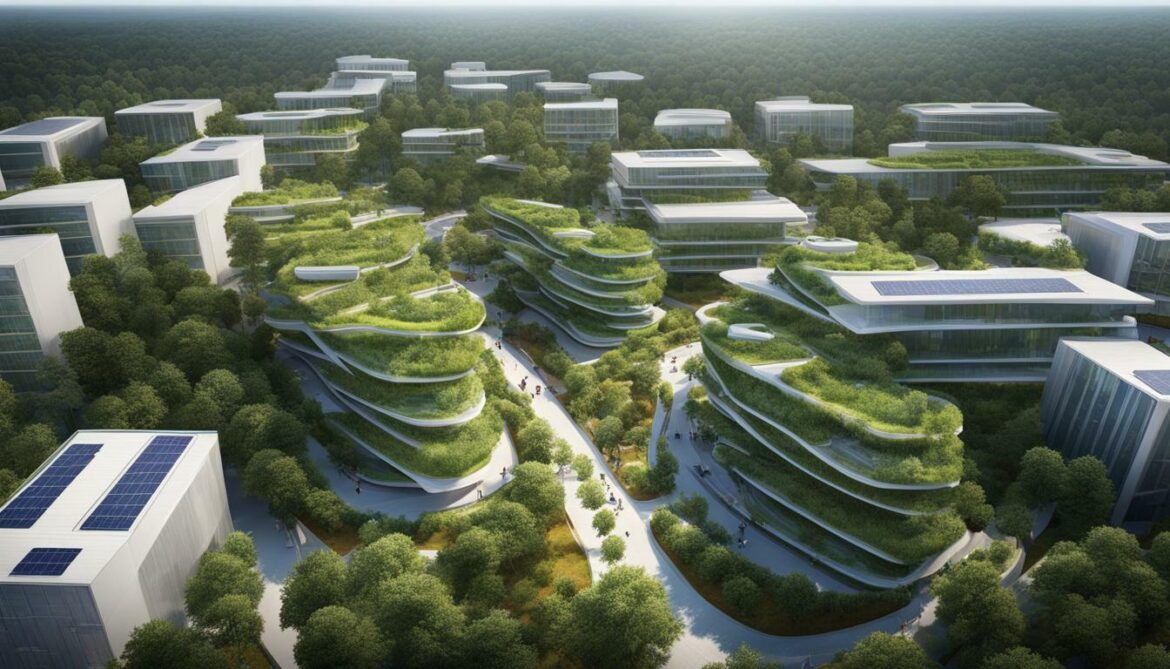
| Benefits of Green Infrastructure in Georgia |
| Improved stormwater management |
| Reduced energy consumption |
| Enhanced air quality |
| Biodiversity conservation |
| Promotion of sustainable transportation |
| Water quality improvement |
Green Infrastructure Initiative: Atlanta BeltLine
The Atlanta BeltLine is a prominent example of Georgia’s green infrastructure initiatives. It is a comprehensive redevelopment and transportation project that aims to create a 22-mile loop of parks, trails, and transit options encircling the city. The BeltLine not only enhances connectivity and mobility but also revitalizes underutilized land, contributing to economic development and community revitalization.
The project incorporates various green infrastructure elements, including the preservation and restoration of natural habitats, the creation of new parks, and the integration of multi-use trails. These components provide numerous benefits, such as increased access to green spaces, opportunities for physical activity, and improved air quality.
The Atlanta BeltLine serves as a model for sustainable urban development, showcasing the positive impacts of green infrastructure on both the environment and the community.
Energy-Efficient Design in Georgia
Energy-efficient design is at the forefront of Georgia’s green buildings, with a focus on utilizing sustainable materials and achieving LEED certification. Green building practices in Georgia strive to minimize energy consumption and reduce the environmental impact of construction. By incorporating energy-efficient design principles, these buildings aim to create comfortable and sustainable spaces that promote a greener future.
One key aspect of energy-efficient design is the use of green building materials. These materials are carefully selected to ensure they have a minimal negative impact on the environment. From renewable resources such as bamboo and cork to recycled materials like reclaimed wood and recycled steel, Georgia’s green buildings prioritize the use of sustainable materials in their construction. This not only reduces the carbon footprint but also creates healthier indoor environments for occupants.
LEED certification plays a crucial role in promoting energy-efficient design in Georgia’s green buildings. LEED, or Leadership in Energy and Environmental Design, is a globally recognized certification system that evaluates the sustainability and efficiency of buildings. By adhering to LEED standards, Georgia’s green buildings undergo rigorous assessments in categories such as energy usage, water efficiency, and indoor environmental quality. Achieving LEED certification demonstrates a building’s commitment to sustainability and validates its energy-efficient design strategies.
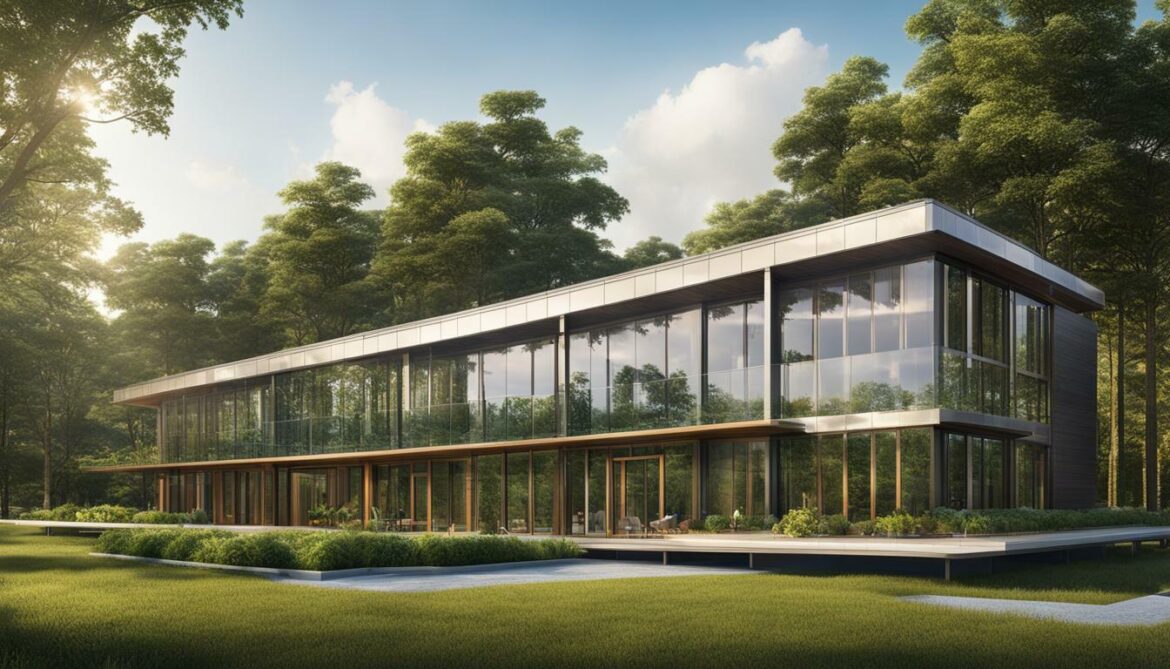
In summary, energy-efficient design is a cornerstone of Georgia’s green buildings, integrating sustainable materials and achieving LEED certification. These buildings prioritize reducing energy consumption and environmental impact, creating sustainable and comfortable spaces for the community. By embracing energy-efficient design practices, Georgia continues to lead the way in green building initiatives and contributes to a more sustainable future.
Sustainable Development in Georgia
Sustainable development takes centre stage in Georgia, where eco-friendly construction and green building practices drive the state’s commitment to a greener future. With a growing emphasis on sustainability, Georgia has emerged as a leader in promoting eco-friendly initiatives and sustainable development projects.
One notable aspect of Georgia’s commitment to sustainable development is its focus on eco-friendly construction practices. These practices encompass a wide range of strategies that minimize environmental impact, conserve resources, and promote energy efficiency. From the use of renewable materials to the incorporation of energy-efficient technologies, green construction practices in Georgia aim to create buildings that are both environmentally friendly and socially responsible.
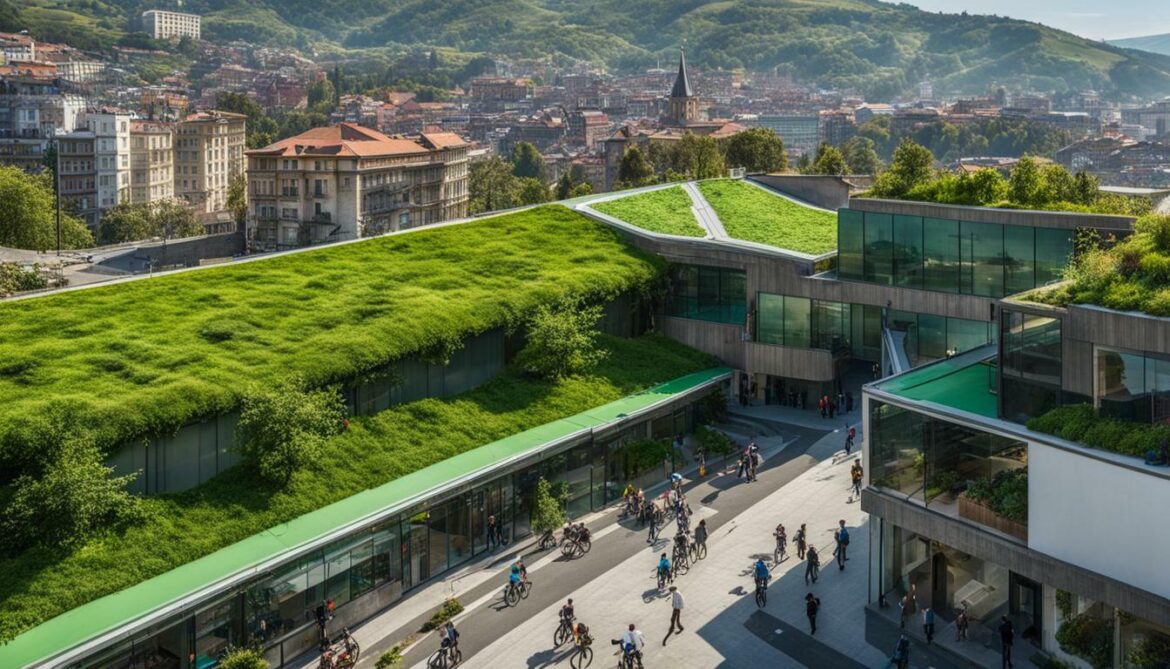
Another key aspect of sustainable development in Georgia is the promotion of green infrastructure. Green infrastructure refers to the network of natural and semi-natural spaces that help improve air and water quality, enhance biodiversity, and create a healthier and more sustainable urban environment. Georgia has implemented various initiatives to develop and maintain green infrastructure, such as parks, green roofs, and urban forests, which contribute to the overall sustainability and livability of the state.
In conclusion, sustainable development in Georgia is a multi-faceted approach that encompasses eco-friendly construction, green building practices, and the development of green infrastructure. By prioritizing these initiatives, Georgia is paving the way towards a greener and more sustainable future, demonstrating its commitment to environmental stewardship and the well-being of its residents.
Conclusion
Georgia’s top green buildings exemplify the state’s dedication to sustainable development, showcasing innovative design and eco-friendly construction practices. With 66 certified projects in 2022, Georgia is listed as the sixth state leading the way in green building according to the US Green Building Council’s ranking. These LEED-certified buildings play a crucial role in reducing energy usage and minimizing the environmental impact of constructions.
Among the notable green buildings in Georgia is the Georgia World Congress Center, which stands as a prime example of sustainable architecture. This state-of-the-art facility incorporates green building materials and energy-efficient design to minimize its ecological footprint while providing a world-class experience for visitors and occupants.
Furthermore, Georgia’s commitment to green infrastructure and energy-efficient design is evident in its numerous LEED-certified projects. These buildings prioritize the use of green building materials and employ sustainable construction practices, creating healthier and more sustainable environments for residents and businesses alike.
By promoting sustainable development through their LEED certifications, Georgia’s top green buildings contribute significantly to the state’s environmental sustainability goals. They serve as a source of inspiration and showcase the benefits of incorporating eco-friendly practices into design and construction processes.
FAQ
What is the ranking of Georgia in green building?
Georgia is listed as the sixth state leading the way in green building according to the US Green Building Council’s ranking.
How is the ranking determined?
The ranking is based on LEED-certified gross square footage per capita over the past year.
How many certified projects were there in Georgia in 2022?
In 2022, Georgia had 66 certified projects, including notable ones like the Georgia World Congress Center.
What are the benefits of LEED-certified buildings?
LEED-certified buildings help reduce energy usage and the environmental impact of buildings.
Which state consistently leads in LEED-certified square footage per capita?
Washington, D.C. consistently leads in LEED-certified square footage per capita.
Which state holds the top spot for LEED professionals?
California holds the top spot for LEED professionals.
Source Links






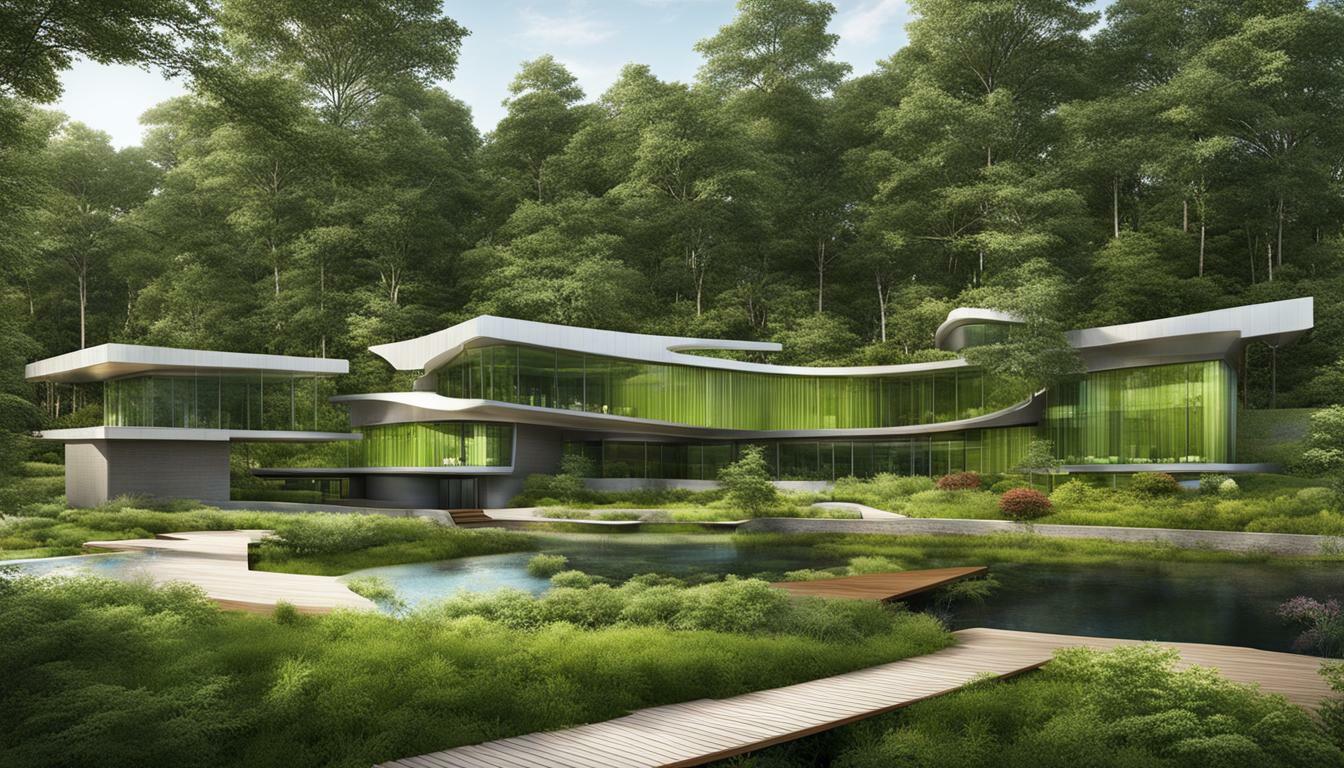

















Post comments (0)